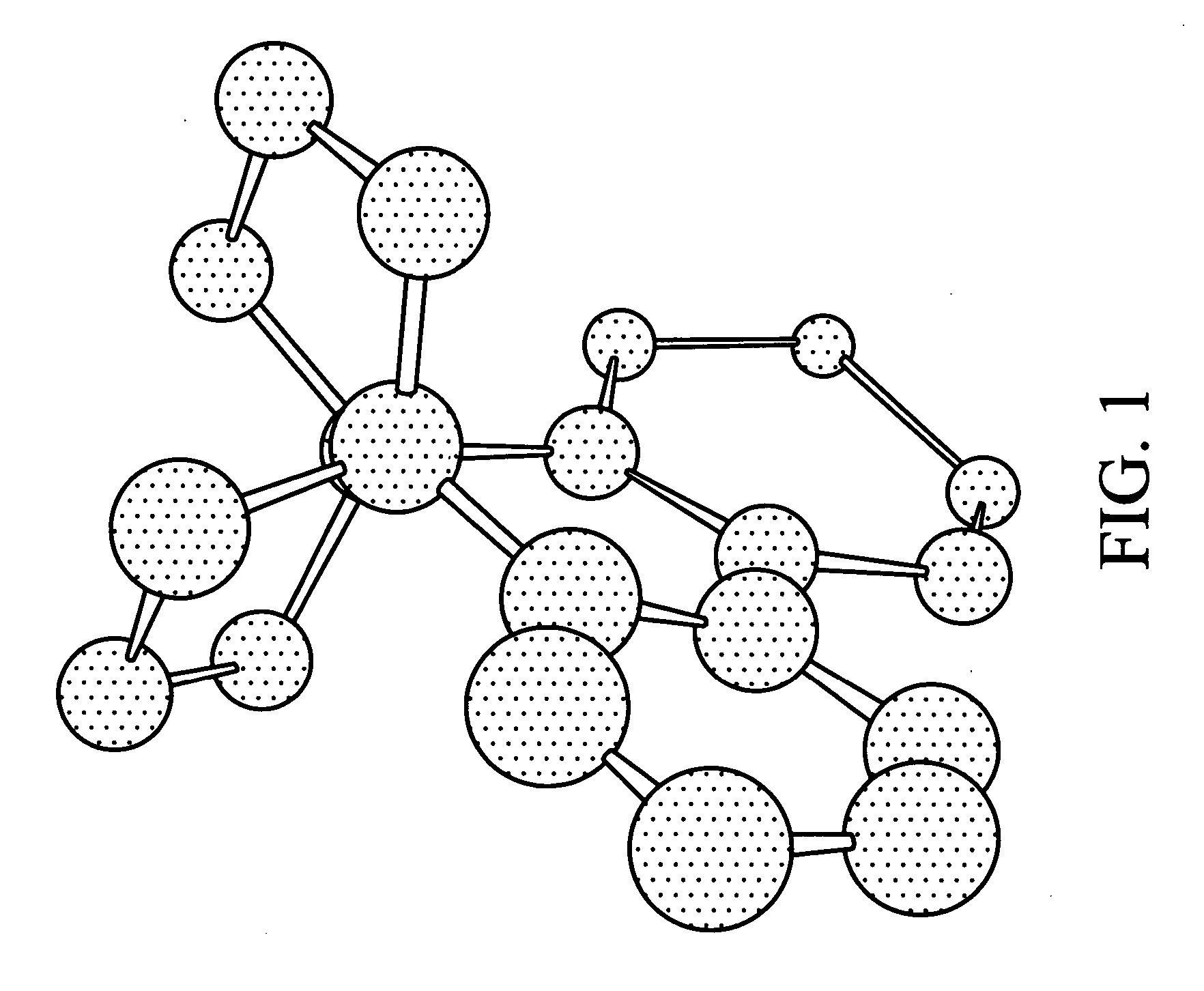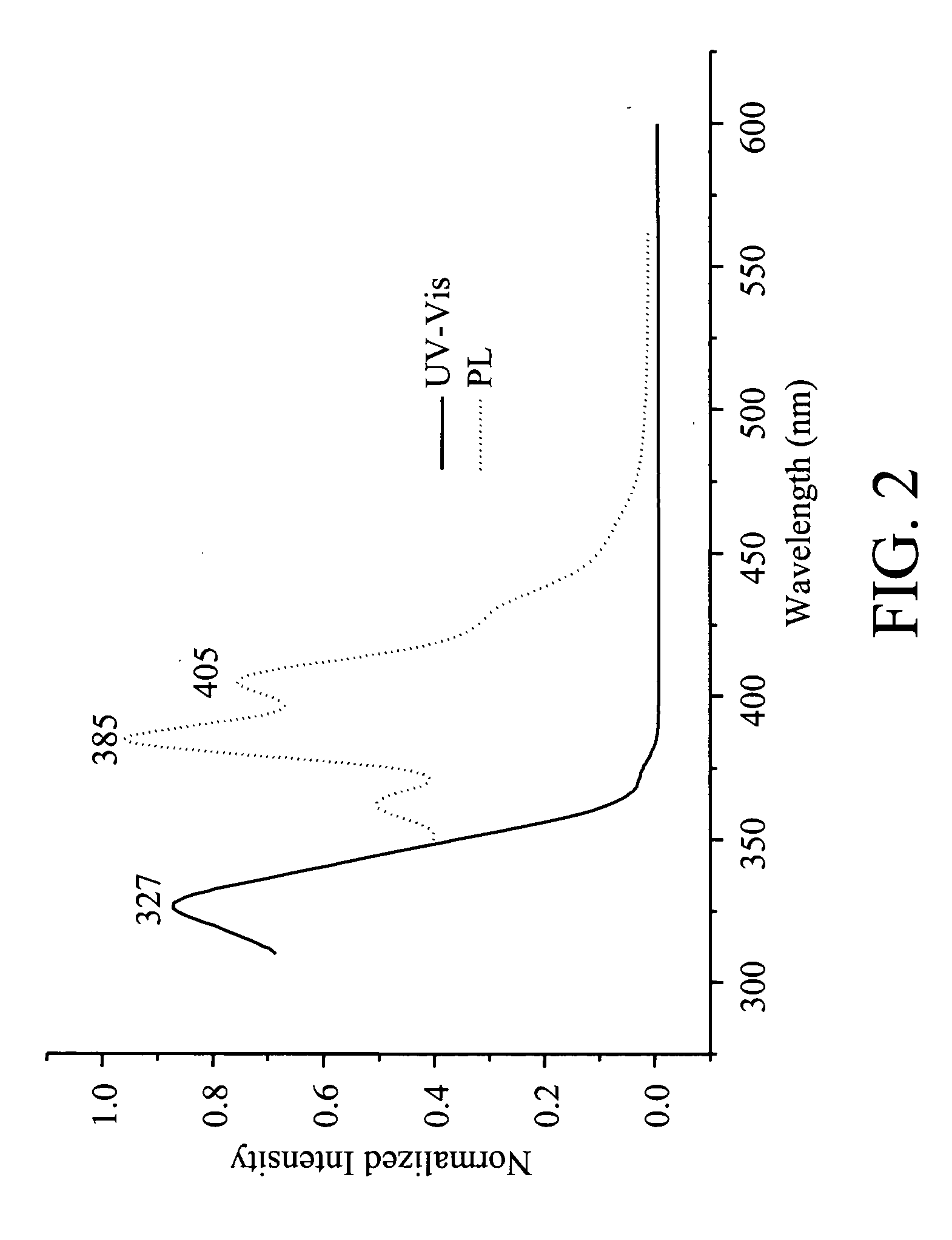Phenanthrene compounds
a technology of phenanthrene and compound, applied in the field of compound, can solve the problems of device failure and limited effect, and achieve the effects of high electron/hole transfer efficiency, good heat resistance and structural stability, and high specific energy gap
- Summary
- Abstract
- Description
- Claims
- Application Information
AI Technical Summary
Benefits of technology
Problems solved by technology
Method used
Image
Examples
example 1
Synthesis of 9,10:9,10-bis(trimethylene)-2,7-dibromo-9,10-dihydrophenanthrene
[0027] 3 grams of phenanthrene-9,10-diketone (manufactured by Aldrich Co., 95%) was dissolved in 60 ml HBr and 20 ml H2SO4, and heated to 80° C., and a small amount of Br2 (manufactured by ACROS Co.) was added slowly, after which the mixture was allowed to react for 24 hours. After precipitation and filtration, dibromophenanthrene-9,10-diketone was obtained at a yield of more than 90%.
[0028] 2 grams of NaOH and 200 ml methanol was mixed and heated to about 60° C. After NaOH was dissolved completely, 3 grams of dibromophenanthrene-9,10-diketone and 4 grams of diethyl 1,3-acetonedicarboxylate (manufactured by ACROS Co., 95%) were added and the temperature was maintained at 60° C. After 36 hours of reaction, 10% HCl aqueous solution was added to the reaction mixture for neutralization, and then the mixture precipitated and filtered. The precipitate collected was dissolved by acetic acid, 300 ml 10% HCl aqueo...
example 2
Synthesis of 9,10:9,10-bis(trimethylene)-2,7-bis-2-naphthalyl-9,10-dihydrophenanthrene
[0032] In a nitrogen atmosphere, 1 ml 2M sodium carbonate aqueous solution and Pd(PPh3)4 as a catalyst were added to a solution of 0.42 grams of 2-naphthaleneboronic acid (manufactured by Lancaster Co., 97%) and 0.5 grams of Compound 1 in 40 ml toluene and the product refluxed to reaction at 120° C. for 12 hours, giving Compound 2 as a white solid at a yield of 39%. Compound 2 is the novel phenanthrene compound of the present invention. 1H NMR (CDCl3): δ (ppm) 1.53 (m, 2H), about 1.70 (m, 2H), 2.21-2.26 (m, 4H), 2.07-2.14(m, 4H), 7.26-7.54(m, 2H), 7.91-8.01(m, 16H), 8.25(s,1H). UV: λmax 312 nm. PL: λmax 416 nm.
[0033] The following reaction scheme illustrates the preparation of Compound 2:
example 3
Synthesis of 9,10:9,10-bis(trimethylene)-2,7-bis(4-ethoxyphenyl)-9,10-dihydrophenanthrene
[0034] Under nitrogen, 1 ml 2M sodium carbonate aqueous solution and Pd(PPh3)4 as a catalyst were added to a solution of 0.40 grams of 4-ethoxyphenylboronic acid (manufactured by Aldrich Co.) and 0.5 grams of Compound 1 in 40 ml toluene and the product refluxed to reaction at 120° C. for 12 hours, giving Compound 3 as a white solid at a yield of 43%. Compound 3 is the novel phenanthrene compound of the present invention. 1H NMR (CDCl3): δ (ppm) 1.41-1.49(m, 8H), about 1.7(m, 2H), 1.99-2.06(m, 4H), 2.06-2.20(m, 4H), 4.03-4.11(m, 4H), 6.96-6.78(d, 2H), 7.40-7.46(m, 4H), 7.54-7.56(d, 2H), 8.13(s, 2H).
[0035] UV: λmax 327 nm. PL: λmax 385 nm.
[0036] The following reaction scheme illustrates the preparation of Compound 3:
PUM
| Property | Measurement | Unit |
|---|---|---|
| wavelength | aaaaa | aaaaa |
| temperature | aaaaa | aaaaa |
| electroluminescence | aaaaa | aaaaa |
Abstract
Description
Claims
Application Information
 Login to View More
Login to View More - R&D
- Intellectual Property
- Life Sciences
- Materials
- Tech Scout
- Unparalleled Data Quality
- Higher Quality Content
- 60% Fewer Hallucinations
Browse by: Latest US Patents, China's latest patents, Technical Efficacy Thesaurus, Application Domain, Technology Topic, Popular Technical Reports.
© 2025 PatSnap. All rights reserved.Legal|Privacy policy|Modern Slavery Act Transparency Statement|Sitemap|About US| Contact US: help@patsnap.com



